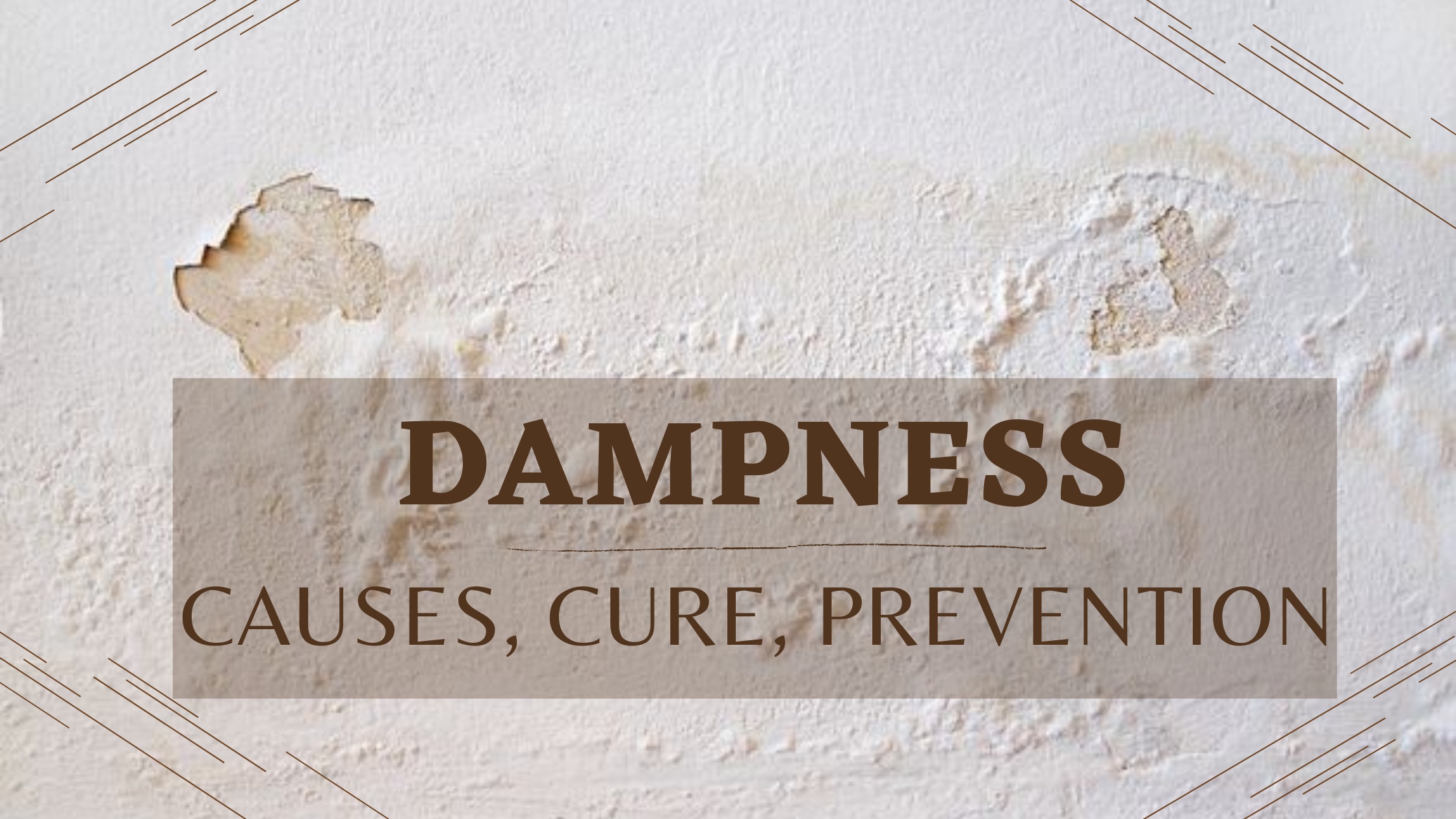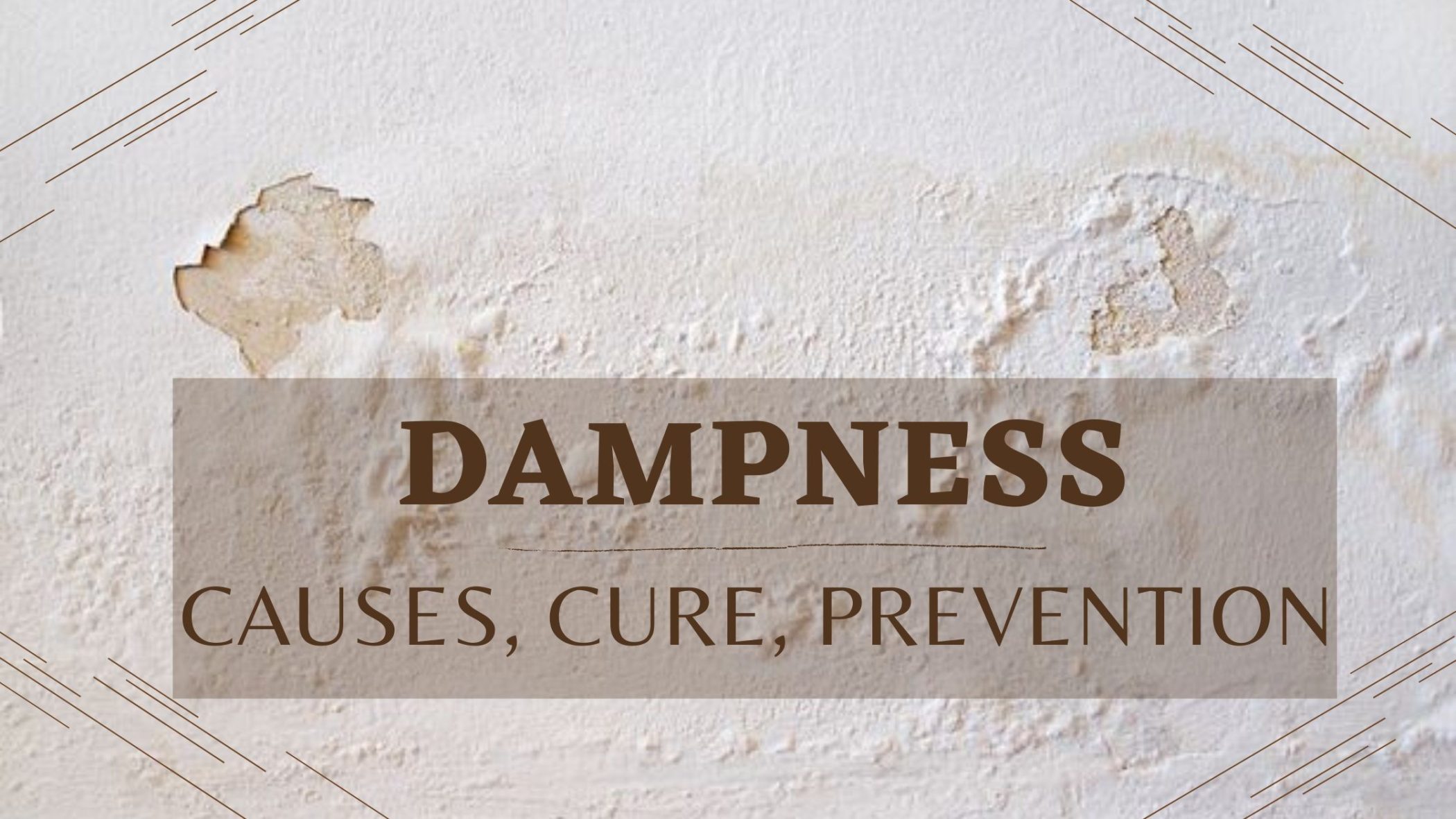One of the basic requirements of any house is that it should remain dry and free from moisture. A wet structure reduces the strength of the structural components of the house. Moreover, it gives rise to unhygienic conditions and may become the breeding ground for several disease-causing organisms. Therefore keeping the house free of moisture becomes an important task while constructing a house. The process of attaining this is called damp proofing. Before we dive into damp proofing, let us look at the various causes of dampness in buildings.

How does moisture seep into your house?
There are several ways by which moisture may seep into your house. They are
- Rain water from wall tops
If the top of the walls are not protected properly from rain penetration, water will enter the wall and will travel down. Leakages will also cause the water to enter the building.
- Rain lashing against the walls
During heavy showers, the rain water lashes against the external walls of the buildings. If the walls are not properly protected, the moisture will enter the walls and cause dampness in the interiors. In addition, if the balconies don’t have a proper outward slope, water will accumulate there and will penetrate the walls through the junction.
- Moisture from the ground
Since all structures rest on soil, moisture travels through it constantly. This moisture may rise up into the wall and the floor by capillary action. Ground water rise may also result in moisture entry into the building through walls and floor.
- Condensation
Due to condensation of atmospheric moisture water is deposited on the walls, floors and ceiling. This moisture may cause dampness.
- Other causes, moisture may also enter due to other reasons
- Poor drainage at the building site
- Imperfect orientation – Walls getting less sunlight and heavy showers will remain damp
- Imperfect roof slope, especially in the case of flat roofs
- Defective construction imperfect wall joints in rules defective throating etc
- Absorption of water from defective rainwater pipes
Importance of Damp Proofing
Moisture content in buildings, if left untreated will result in a lot of unnecessary hassles for the building and its inmates. It may cause small scale or permanent damages to the building which may cost your very dearly. It may also put the health of the inmates at risk.
Effects of dampness
The following are the effects of not damp proofing your building.
- Dampness may cause patches on the walls which will affect the overall looks of your building.
- Moisture will cause softening and peeling off of plaster.
- The continuous presence of moisture may damage the bricks and tiles and cause a reduction in their strength
- Floor tiles may loosen when moisture enters through the floor.
- Wooden fittings like doors, windows, cupboards etc may get damaged.
- Electrical fittings will deteriorate causing leakage of electricity and short circuit.
- The wall decorative elements like paintings will be damaged.
- Dampness promotes the growth of termites and gives rise to the breeding of mosquitoes.
- It may also breed germs causing diseases like TB, rheumatism, asthma etc
Methods of Damp Proofing
Now let us look at some of the most common methods used for damp proofing in Kerala.
1. Use of damp proofing course DPC membrane damp proofing
This method consists of introducing a water-repellent membrane or damp proof course (DPC) between the source of dampness and the part of the building adjacent to it. The damp proofing course consists of flexible materials like bitumen, cement concrete etc and can be provided either horizontally or vertically in floors, walls etc.
While doing DPC keep in mind that
- The DPC course should cover the full thickness of the walls
- The mortar bed supporting the DPC should be levelled and even. It should be free from projections so that the DPC is not damaged.
- DPC should be laid so that a continuous projection is provided.
- At junctions and corners of walls, the horizontal DPC should be laid continuously.
- DPC should not be kept exposed on the wall surface.
2. Integral damp proofing
Integral damp proofing consists of adding certain waterproofing compounds of materials to the concrete mix so that it becomes impermeable.
3. Surface treatment
The surface treatment method is effective when the moisture is superficial.
This method consists of applying a layer of water repellent substances or compounds on the surface through which moisture enters. Use of water repellent substances such as Calcium and Aluminum compounds are effective against rainwater penetration. Pointing and plastering of the exposed surface must be done carefully using waterproofing agents like sodium or potassium silicate, aluminium or zinc sulphate, barium hydroxide and magnesium sulphate etc.
4. Cavity wall construction
Cavity wall construction is an effective method of damp prevention in which the main wall of a building is shielded by an outer skin wall, leaving a cavity between the two.
5. Guniting
This method consists of depositing an impervious layer of rich cement mortar under pressure over the exposed surface for waterproofing.
This method can also be used over pipes for resisting the water pressure.
6. Pressure grouting
This consists of forcing cement grout under pressure into cracks, voids and fissures present in the structural components of the building or on the ground. Thus the structural components and the foundations which are liable to moisture penetration are consolidated and others made water penetration resistant. This method is quite effective in checking the seepage of raised groundwater through foundations and substructure of a building.
Final Thoughts on Damp Proofing
Hope this gives you some clarity of damp proofing and its importance in the longevity of your building. When you talk to your contractor make sure that Damp Proofing is not an option and has to be compulsorily done for your building.
